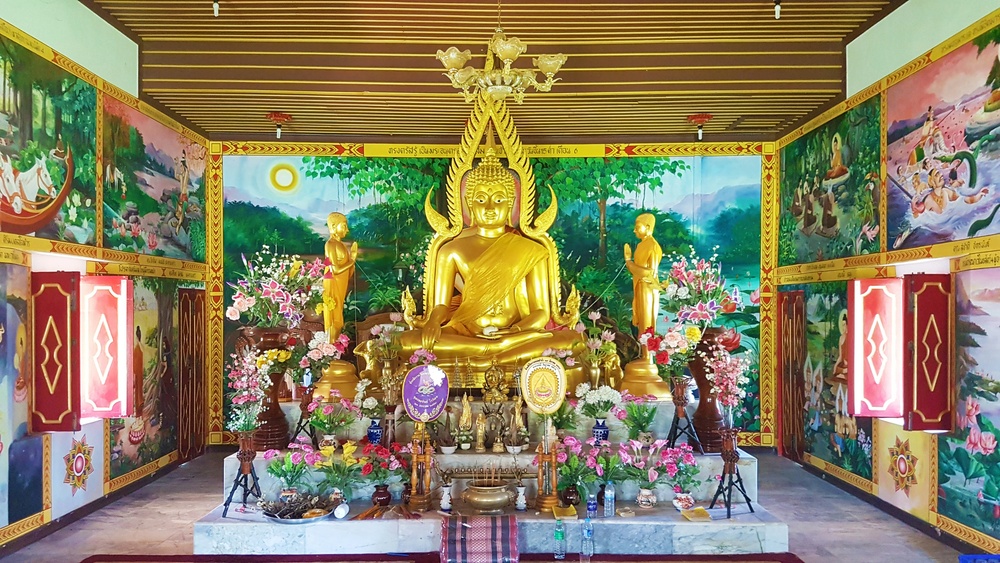India, the cradle of Buddhism, offers travelers a profound spiritual experience unlike any other. From ancient temples to serene monasteries nestled in the Himalayas, the country’s most popular Buddhist destinations in india invite pilgrims and seekers to embark on a transformative journey. These sacred sites not only commemorate the life and teachings of the Buddha but also provide tranquil spaces for meditation, reflection, and peace.
If you’re ready for a spiritual journey that connects you to centuries of wisdom and devotion, here’s a guide to exploring India’s most revered Buddhist destinations.
Bodh Gaya, Bihar: The Pinnacle of Enlightenment
Bodh Gaya is the heart of Buddhism and one of India’s most popular Buddhist destinations. This is where Prince Siddhartha Gautama achieved enlightenment under the Bodhi Tree, becoming the Buddha. The Mahabodhi Temple complex, a UNESCO World Heritage Site, stands majestically here, surrounded by gardens and monasteries from different Buddhist traditions around the world.
Visitors come to meditate beneath the Bodhi Tree and participate in ceremonies that have been held for centuries, making Bodh Gaya a living center of spiritual awakening.
Sarnath, Uttar Pradesh: The Buddha’s First Sermon
Sarnath holds immense significance as the site where the Buddha delivered his first sermon after enlightenment. This event laid the foundation of the Buddhist community or Sangha. The town is home to the Dhamek Stupa and several ancient ruins that narrate stories from Buddhist history.
Sarnath offers a peaceful environment for pilgrims to contemplate the Buddha’s teachings and visit the archaeological museum housing priceless relics like the Lion Capital of Ashoka, India’s national emblem.
Kushinagar, Uttar Pradesh: The Place of Final Liberation
Kushinagar is revered as the place where the Buddha attained Mahaparinirvana, marking his departure from the physical world. This tranquil town draws thousands of devotees annually who come to pay their respects at the Mahaparinirvana Temple, which houses a magnificent reclining Buddha statue symbolizing peace and liberation.
The serene ambiance and the presence of international monasteries make Kushinagar a vital stop on any spiritual journey.
Rajgir, Bihar: The Buddha’s Meditation Retreat
Nestled among scenic hills, Rajgir served as a frequent retreat for the Buddha. It is where he delivered many sermons and spent considerable time in meditation. The Gridhakuta or Vulture’s Peak, a prominent hill here, is believed to be a key location for many teachings.
The town also features the Vishwa Shanti Stupa and a Japanese Peace Pagoda, attracting both pilgrims and nature lovers seeking tranquility.
Nalanda, Bihar: The Ancient Seat of Learning
Nalanda was once the world’s oldest residential university, a major hub for Buddhist scholarship attracting monks and scholars from across Asia. Though now in ruins, its archaeological remains tell the story of an era when Nalanda was a beacon of Buddhist philosophy and education.
Visiting Nalanda offers a glimpse into the intellectual heritage of Buddhism and the profound legacy left by ancient Indian scholars.
Tawang, Arunachal Pradesh: Himalayan Spiritual Oasis
Perched high in the eastern Himalayas, Tawang is home to the magnificent Tawang Monastery, India’s largest and the second-largest Buddhist monastery in the world. This vibrant center of Mahayana Buddhism is a treasure trove of spiritual knowledge, ritual, and Himalayan culture.
The monastery’s stunning architecture, coupled with panoramic views, creates an atmosphere of peace and devotion that inspires every visitor.
Sanchi, Madhya Pradesh: The Artistic Legacy of Buddhism
Sanchi is famous for its stupas, especially the Great Stupa built by Emperor Ashoka in the 3rd century BCE. These stupas are adorned with intricate carvings depicting Buddha’s life and teachings. Sanchi’s artistic heritage is a testament to the spread and influence of Buddhism in India.
Visiting Sanchi allows travelers to connect with the rich history and visual storytelling that has preserved Buddhist philosophy over millennia.
Leh, Ladakh: The Land of Monasteries
Leh, in the cold desert of Ladakh, is dotted with ancient Tibetan Buddhist monasteries like Hemis, Thiksey, and Diskit. These monasteries are living centers of worship and learning, known for their festivals, prayer halls, and vibrant murals.
Leh’s remote, tranquil environment offers a unique spiritual experience deeply rooted in Tibetan Buddhist culture.
Dharamshala and McLeod Ganj, Himachal Pradesh: Tibetan Buddhist Heartland
Home to the Dalai Lama and the Tibetan government-in-exile, Dharamshala and McLeod Ganj have become hubs of Tibetan Buddhism in India. The Tsuglagkhang Complex and Namgyal Monastery are focal points for spiritual teachings and cultural exchange.
This area provides a blend of contemplative spirituality and vibrant Tibetan culture, attracting visitors seeking peace and inspiration.
Lumbini (via India-Nepal border): The Buddha’s Birthplace
While Lumbini is in Nepal, its proximity to India means it is often included in Indian Buddhist tours. Lumbini marks the birthplace of Siddhartha Gautama and features sacred gardens, monasteries, and the Maya Devi Temple.
Visiting Lumbini completes the spiritual journey through the major sites connected to the Buddha’s life.
Final Thoughts: Begin Your Spiritual Journey
Exploring India’s most popular Buddhist destinations is a deeply rewarding experience that transcends mere sightseeing. These sacred sites offer a chance to reflect on life, seek inner peace, and connect with the timeless wisdom of the Buddha.
Whether you are a devout follower, a history enthusiast, or simply seeking tranquility, a spiritual journey through these destinations will enrich your soul and broaden your understanding of Buddhism’s enduring legacy.



















